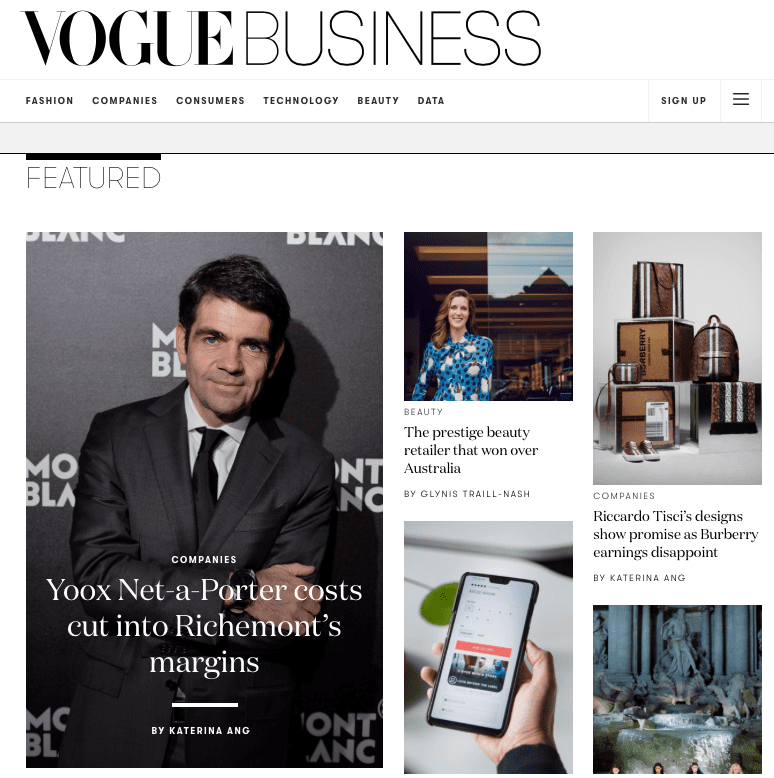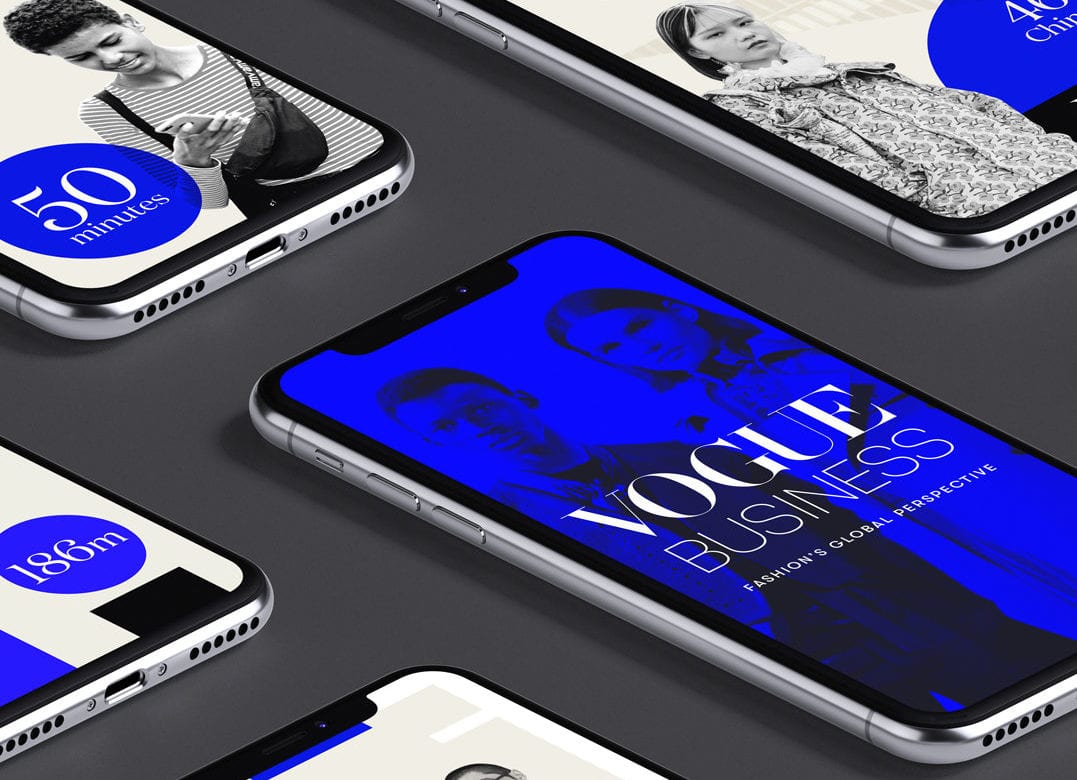|
Getting your Trinity Audio player ready...
|
Vogue Business is a new product for 2019, designed to help Condé Nast capitalise on the B2B side of the fashion industry. Here, chief editor Lauren Indvik, talks to FIPP about content, revenue models, and international operations.
With a library of brand expansions including apps, books, videos, podcasts, and even a couple of behind the scenes documentaries to its name, Condé Nast’s Vogue is unquestionably one of the most iconic names in both the global fashion and the global media industries. But 2019 has brought one of the 126-year-old publication’s most interesting – and ambitious – projects to date: the launch of Vogue Business.
The fashion industry is one of the most lucrative and recognisable enterprises in the global marketplace, and as Lauren Indvik, chief editor for Vogue Business explains, expanding into this side of the sector was a no-brainer:
“The fashion industry is a three trillion dollar industry, but there are very few trade magazines/publications for the industry, and furthermore it is not really well covered in the existing business press.”
“Condé Nast International did a strategic business review in 2017, looking basically for new opportunities and new revenue streams outside of advertising. One of the opportunities that they scoped out was in products and services for the fashion industry: basically B2B, it’s not a space that we were in. So round about last May, they isolated a team of six within a brand new business development group. We also brought in an outside consultancy to help us basically build an innovation framework, because there was no formal framework for launching a new business at Condé Nast.”
“Vogue Business was the guinea pig, and again we knew we had this big opportunity in the fashion B2B space. What we didn’t know was whether we could create a product that was differentiated and valuable enough. So through lots of user research – we spoke to about 80 people initially – and through eight months of beta testing, we hit all of our KPIs, the business was really happy, they decided to fund us, and we launched in January of this year.”
The move represents an exciting brand extension for Condé Nast. At a time when other major international publishers are seeking to futureproof revenues through new endeavours such as media and marketing services, or niche events businesses, this B2B focus allows the Vogue brand to do what it does best in a complimentary space. And as Indvik highlights, the traditional publishing experience gained in the B2C arena is proving just as valuable in B2B.
“Email is our most important channel. We launched this thing as a newsletter product, supported by a website as well as Instagram and LinkedIn. We believe that our best audience will be the one that accesses us through email. It will be our most loyal audience, our most engaged audience, and the one most likely to pay for other products and services that we have in the pipeline.”
“That said, newsletters definitely have their limits. You can’t share them on social media, you can’t get discovered by search that way, which is why we can’t exist as a newsletter only product. Which is why we have a website, which is why we’re optimising search on that website, and which is why we will have more presence particularly around social media and in new languages.”

When asked about revenue models, the editor’s response is less traditional. The new publication will be taking a modern approach to monetisation.
“In terms of the business plan we are not planning a substantial advertising business. Furthermore, the advertisers that we will partner with will not be endemic, so we’re not going after anyone in the fashion industry or anything that would compete with our existing Vogues. I can’t talk too much about the business model, but we are going into areas that you would naturally expect. How do we help people find their next job? How do we help companies find the best talent? Membership, events, subscriptions – those are all things that we’re looking at.”
In terms of international expansion plans, Vogue Business is undeniably starting from a strong base. The global footprint already enjoyed by the existing magazine should prove to be a massive asset to the new platform, ensuring that an existing network for international growth is already in place.
“Well we already operate in 31 markets and we have 25 Vogues. So really our first step is working with our international Vogues to give us insights about their markets, which we can then leverage in a B2B context. We’re not in every market that we want to cover though. For example, a couple of weeks ago we did a story on the luxury opportunities in the Philippines, so we’re also supplementing of course with freelance contributors.”
“The two things that readers have really asked for is firstly to help them gain a global understanding of the fashion industry. So right now, it’s about making sure that our coverage isn’t too Western focussed for example, which is really natural when you have a team based in London. Right now we’re about 50 per cent Western vs. non-Western, and when you consider that the luxury market for example is 50 per cent based in China, then around half of our articles should be on China.”
“The second thing that we’re most often asked for is stories about technology. Stories about fashion and artificial intelligence do best for us in terms of a total audience and loyalty perspective. Our readers really also want to know about the role of technology in stores.
“So those are two initial areas of focus. But we’ve just hired a data editor, we’ve just hired a sustainability editor, again based on feedback that we’ve had from readers. We cover fashion, we have verticals around consumer insights, consumer behaviour, cultural trends, retail, marketing, etc. Those are all core areas of focus. Of course as with any team we’re small, so it’s all about prioritising.”
Jamie Gavin, FIPP


